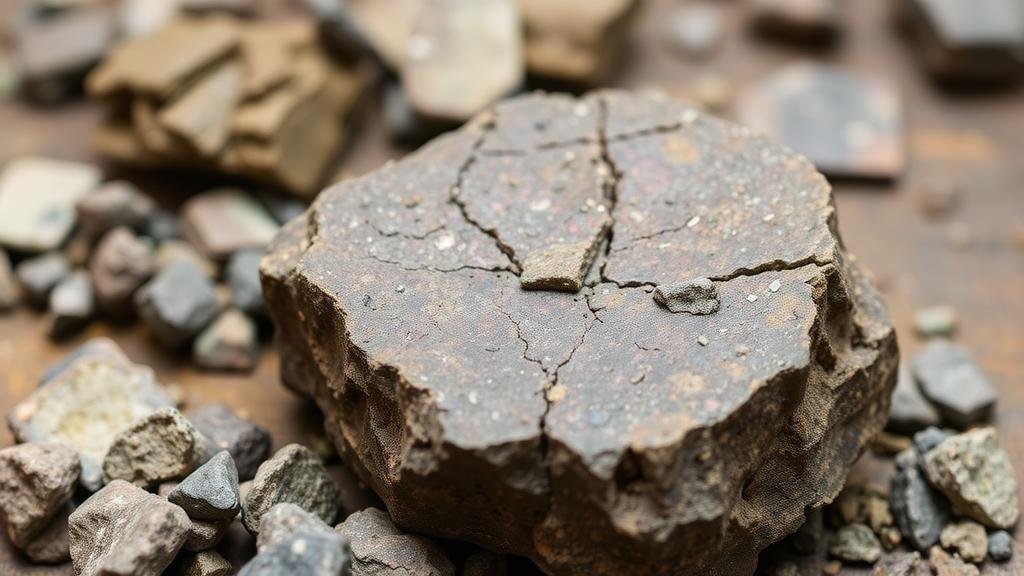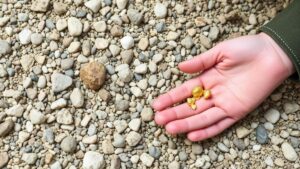Understanding the Role of Host Rock in Controlling Metal Mineralization
Understanding the Role of Host Rock in Controlling Metal Mineralization
Metal mineralization is a complex process influenced by several geological factors, one of the most significant being the composition and characteristics of the host rock. The host rock, which is the bedrock within which mineral deposits are formed, plays a critical role in determining the type, quantity, and distribution of economically viable mineral resources. This article explores the intricate relationship between host rock and metal mineralization, examining how various properties influence mineralization processes.
The Importance of Host Rock Composition
The mineral composition of the host rock is paramount in controlling metal mineralization. It can affect the availability of specific elements required for ore formation and influence the geochemical environment necessary for metal transport and deposition.
Mineralogical Composition
The mineralogical makeup of the host rock determines the types of metals that can be concentrated. For example, mafic and ultramafic rocks often serve as hosts for valuable metals such as nickel and platinum due to their higher concentrations of sulfide minerals. On the other hand, silicate-rich granitic rocks may concentrate gold and tungsten, especially in hydrothermal systems.
- The Sudbury Igneous Complex in Canada is a prime example of a mafic rock formed through a meteor impact that hosts significant nickel-copper mineralization.
- In contrast, the Carlin Trend in Nevada highlights how carbonate-rich host rocks can lead to substantial gold deposits through unique hydrothermal processes.
Texture and Structure of Host Rocks
Beyond mineral composition, the physical texture and structure of host rocks greatly influence mineralization. For example, the porosity and permeability of the host rock can facilitate the movement of hydrothermal fluids, which are crucial for ore deposition.
High porosity allows fluids to move through the rock, carrying metals and enabling chemical reactions necessary for mineralization to occur. For example, the alteration of granite to form quartz veins can create pathways for mineral-laden fluids, leading to gold deposits as seen in the Witwatersrand Basin of South Africa.
The Geochemical Environment
The geochemical characteristics of the host rock create an environment conducive to metal transport and precipitation. Factors such as pH, temperature, and the presence of ligands or reductants can dictate whether metals are mobilized or immobilized within the rock.
Influence of pH and Temperature
The acidity or alkalinity of the environment is crucial in determining the solubility of minerals. For example, low pH environments can enhance the solubility of base metals like copper and lead, while high pH environments can favor the precipitation of gold and silver. Temperature also plays a crucial role; higher temperatures can increase the solubility of many metals, thus affecting their transport potential.
- At high temperatures, copper may remain soluble in hydrothermal fluids, allowing it to be transported over significant distances before encountering conditions that promote precipitation.
- On the other hand, in cooler environments, gold tends to precipitate more readily as its solubility decreases, leading to the formation of rich lodes near the surface.
Role of Ligands and Reductants
The presence of ligands (molecules that can donate electrons to metals) and reductants (substances that reduce other substances) further influences mineralization. For example, sulfide minerals can effectively transport metals in solution. So, in settings rich in organic matter or sulfide minerals, we often observe significant ore deposition.
Case Studies: Insights from Mining Operations
Real-world applications of understanding host rock effects on mineralization are evidenced in several mining operations. These case studies illustrate the practical implications of host rock characteristics on metal deposit formation.
The Olympic Dam, Australia
At the Olympic Dam, one of the world’s largest deposits of copper, gold, and uranium, the mineralization is strongly linked to the surrounding granite host rock. The favorable conditions created by the rocks composition, coupled with ancient hydrothermal systems, resulted in the concentrated deposits we see today.
The Gold Fields of Western Australia
The plentiful gold deposits found in the Greenstone Belts of Western Australia are closely associated with the region’s basalt and sedimentary host rocks. geological setting enables the optimal chemical and physical conditions necessary for gold mineralization, showcasing the significant role of host rock in these rich deposits.
Actionable Takeaways
Understanding the role of host rock in controlling metal mineralization is crucial for exploration and mining efforts. Geologists and mining companies can better predict the location of mineral deposits by considering the following:
- Assess the mineralogical composition of potential host rocks to identify suitable environments for specific metals.
- Examine the texture and structure of prospective sites for permeability and porosity indicators.
- Analyze geochemical conditions and consider how factors like pH and temperature may affect mineral transport and deposition.
To wrap up, a comprehensive understanding of host rock characteristics significantly enhances our ability to locate and exploit metal mineral resources efficiently. As mining continues to evolve, integrating geological insights into exploration strategies will remain paramount in harnessing the earth’s mineral wealth.



